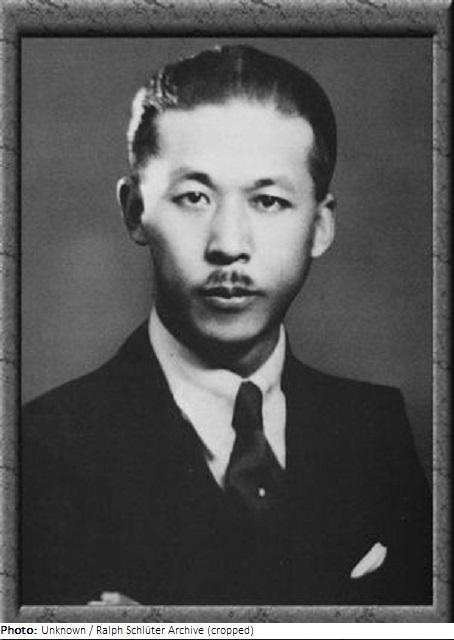Kosaku Yamada

Biographical information
| Roles | Competed in Olympic Games |
|---|---|
| Sex | Male |
| Full name | Kosaku•Yamada |
| Used name | Kosaku•Yamada |
| Original name | 山田•耕筰 |
| Other names | Kósçak Yamada, 山田耕作 |
| Born | 9 June 1886 in Bunkyo, Tokyo (JPN) |
| Died | 29 December 1965 (aged 79 years 6 months 20 days) in Setagaya, Tokyo (JPN) |
| NOC |  Japan Japan |
Biography
When Kosaku Yamada was only 10-years-old, his father died. According to his father’s wishes, Kosaku attended a Christian missionary school. He later went to live with his sister, who was married to an Englishman, Edward Gauntlet. They allowed him to pursue his higher education and Gauntlet, an amateur musician and an organist for the Anglican Church, fostered his interest in Western music and in 1904 Yamada entered the Tokyo Music School. Because that School did not have a composing department at that time, Yamada studied singing and later cello and theory under two German teachers, August Junker and Heinrich Werkmeister. Yamada wrote string quartets, instrumental pieces, songs and chorals. In 1910, he moved to Berlin to continue his studies at the conservatory guided by famous composers like Max Bruch and Leopold Wolf, where he wrote a symphony and an opera, both the first attempts ever by a Japanese composer.
When Yamada was on a visit to Japan, he was forced to stay there due to the outbreak of World War I. Reluctantly he gave up his plans for Europe and in 1914 founded his own orchestra, because there was no symphony orchestra in Japan at that time. In 1918 his works were performed for the first time at Carnegie Hall, New York, where he conducted the New York Symphony Orchestra. During his time in the United States, he met the Russian composers Rachmaninov and Prokofiev. In 1921, one of his most important works, the Inno Meiji symphony, was completed, combining traditional Japanese instruments as solo instruments backed by a symphony orchestra. In the 1930s, he continued to conduct, including the Berlin Philharmonic Orchestra, and wrote a wide variety of musical pieces including scores for the first Japanese movies with sound.
Yamada then worked as a musical teacher, numbering among his students Wenye Jiang and Noboru Ito. He later concentrated on musical theatre, but his magnum opus, called The Princess Shian-Fei, based on a Chinese story, was left uncompleted when Japan was defeated in World War II. It was finished much later and was not staged until 1981. In 1942 Yamada was appointed a member of the Imperial Academy of Arts and two years later he became president of the Japanese Music Cultural Association. His activities during the war, such as appearing in uniform and being given a general’s treatment, were later considered quite controversial and some thought he should be considered a war criminal. After suffering a stroke in 1948, Yamada became disabled and was only able to write songs. In 1956, he was awarded the Order of Cultural Merit, and at the age of 79 he died in his home in Tokyo from a heart attack.
Kosaku Yamada was a leading figure in bringing Western music to Japan and by performing in New York, Berlin and other places of the Western World he was also the first Japanese composer to become known in Europe and North America. His life was later dramatized for television.
His entry in the 1936 art competitions in 1936 is listed in the catalog simply as Kōshinkyoku (March). It can be assumed that it actually was Orinpikku kōshinkyoku: Kagayaku Asahi (Olympic March: Brilliant Morning Sun) from 1936. It was released on vinyl by the Columbia label.
Results
| Games | Discipline (Sport) / Event | NOC / Team | Pos | Medal | As | |
|---|---|---|---|---|---|---|
| 1936 Summer Olympics | Art Competitions |  JPN JPN |
Kosaku Yamada | |||
| Music, Compositions For Orchestra, Open (Olympic) |